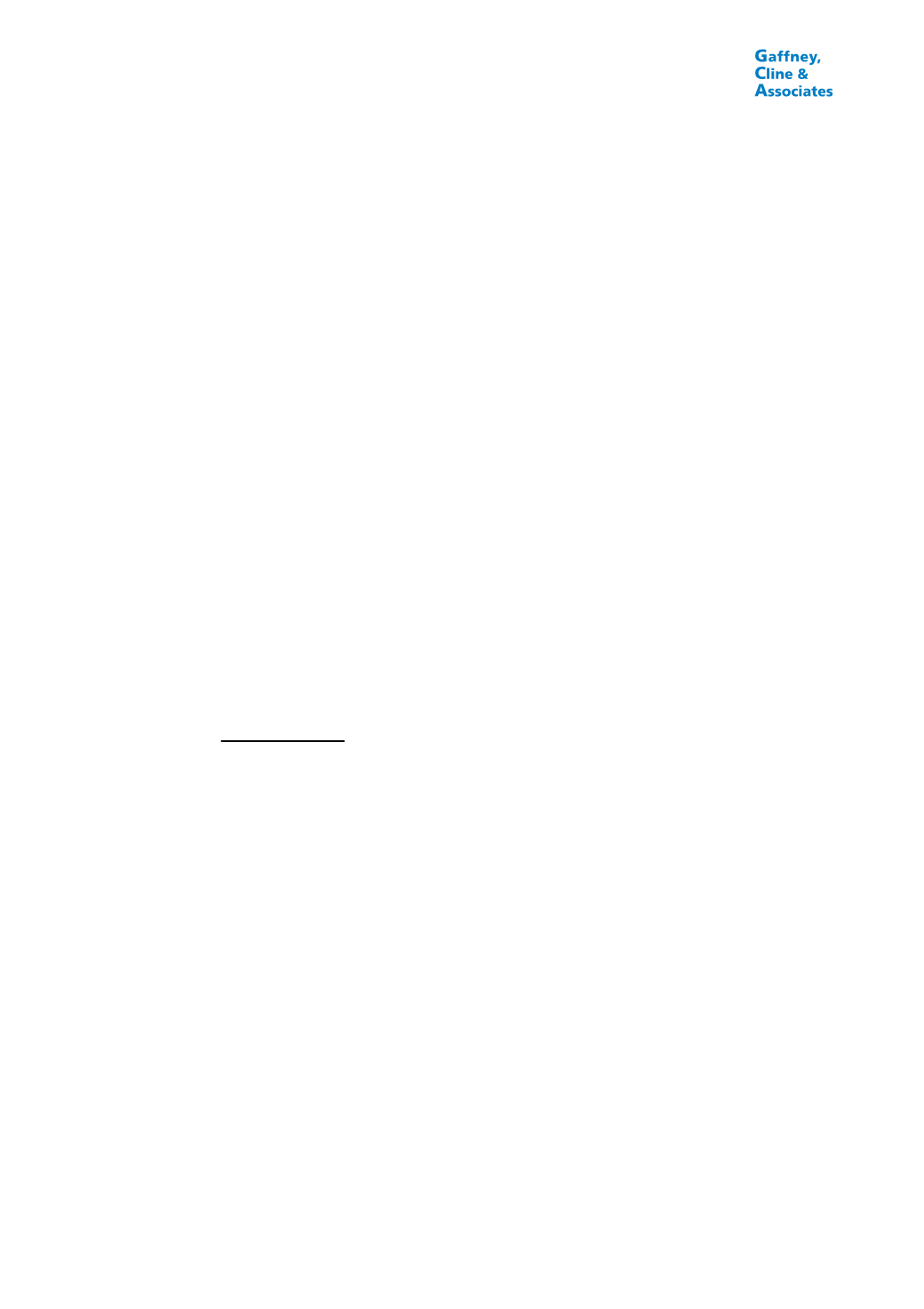
Kuwait Energy
EL-12-211107
58
The Mahwis and Karim reservoirs in Warad;
The Mesozoic Clastics in Ilham (heavy oil);
The Mahwis reservoir in Irad (bypassed oil);
The Lower Gharif and Al-Khalata reservoirs in Ghazara; and
The Haradh and Karim reservoirs in Jadeer.
A total of 39 wells are planned to be drilled in 2014, and the expected production from
these wells has been included in the Developed plus Undeveloped production forecasts.
The Operator has defined a 5-year drilling schedule, but drilling beyond end 2014 has not
been considered in this assessment as it would depend on a renewal of the contract
being granted.
Estimates of CAPEX (US$43.2 MM for drilling and work-overs in the remainder of 2014)
and OPEX (US$28.62 MM p.a.) have been taken from the Operator’s budget as
presented to KE. In the Developed cases, there is no CAPEX.
GCA understands that a renewal of the KSF Service Agreement beyond August, 2016 for
another 10-year period is under discussion with PDO. If that does happen, low, best and
high estimates of KE’s additional net pre-tax revenues over the 10-year period, expressed
in terms of equivalent barrels of oil, would be as shown in Table 0.12. An economic limit
test has been applied in arriving at these estimates, and the assumption made that the
terms of the Service Agreement would be unchanged on renewal. The estimates assume
that the drilling programme proposed by the Operator for 2014 goes ahead as planned,
but neglect any further development activity thereafter. The Operator has already
proposed various further developments, including water, polymer and/or steam injection
projects, but a guarantee of renewal of the contract is necessary to justify the capital
investment that would be required.
5.
CONTINGENT RESOURCES – PAKISTAN
5.1
Jherruck Block
KE holds a 40% working interest in the Jherruck Block, which covers an area of 734 km
2
in the Lower Indus Basin (Figure 5.1). The remaining 60% is held by New Horizon E&P
Ltd (NHEPL), the Operator of the Block. The exploration license covering the Block is
currently in Phase I, which has been extended and now runs until 31
st
December, 2014.
Phase II would run for 2 years after that date if the contractor elects to enter into it. There
is a commitment to acquire 200 km
2
of 3D seismic data and then either to spud a second
exploration well (the first was drilled in 2011) or to surrender the license and pay
“liquidation damages”. The fiscal regime applicable to the license is tax/royalty.
KE and NHEPL also held an interest in the nearby Kunri Block, where Phase 1 of the
exploration license expired in June, 2012 with an unfulfilled commitment to drill two
exploration wells. An application has been made to relinquish Kunri and to transfer the
commitment to Jherruck, but no reply has yet been received.
There are numerous oil and gas discoveries and several productive fields (e.g. Kato and
Daru) in the Lower Indus Basin to the east of the Jherruck Block (Figure 7.1). The main
productive reservoir is the Lower Cretaceous Lower Goru Formation, where marginal
marine/coastal sediments, including shoreface, are found particularly towards the base of
the formation. Open marine shelf sandstones are present but reservoir potential will
decrease westwards as the sediments become argillaceous in the deeper offshore. The
overlying Upper Goru Formation is composed of argillaceous limestone and appears to
act as an efficient seal.


